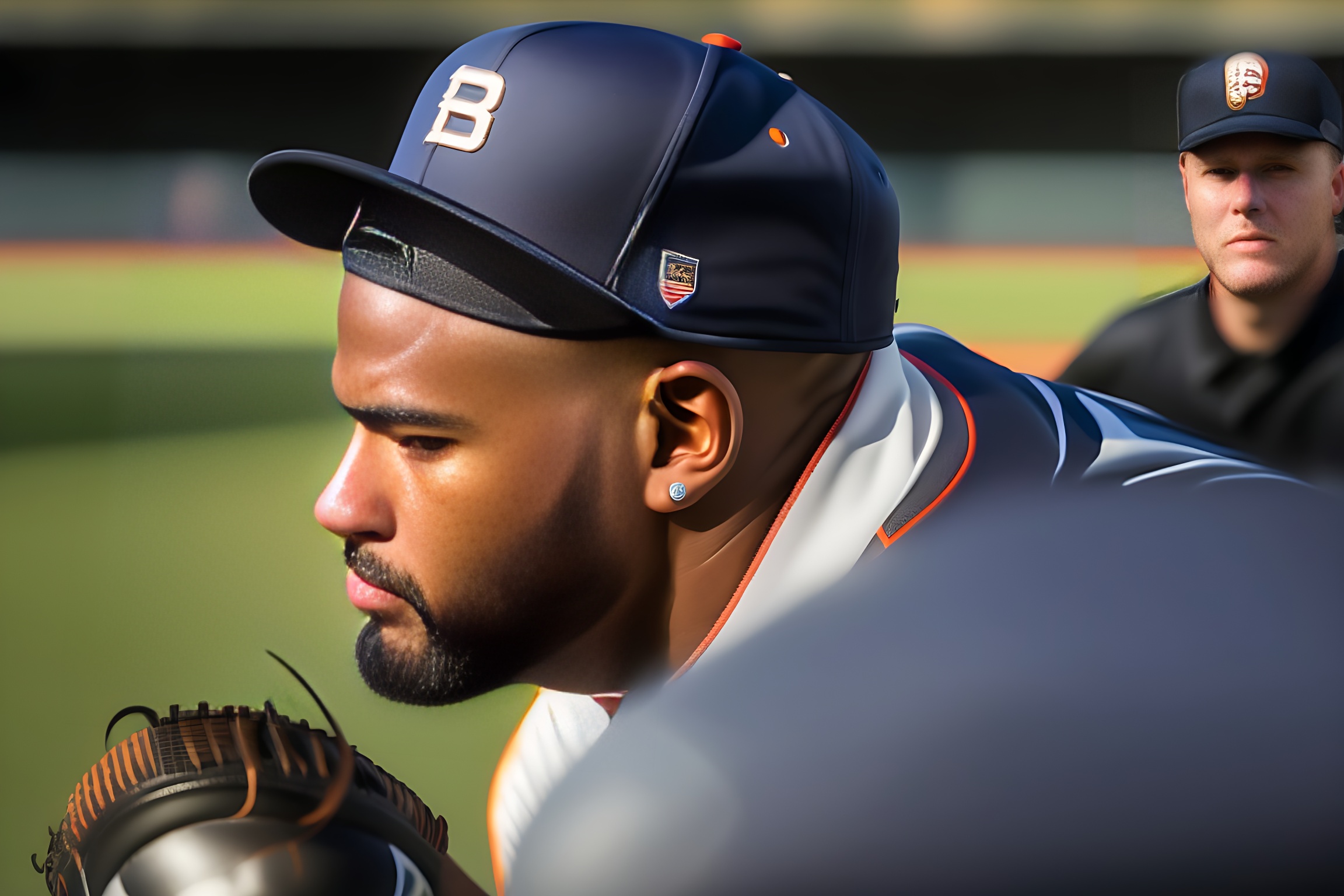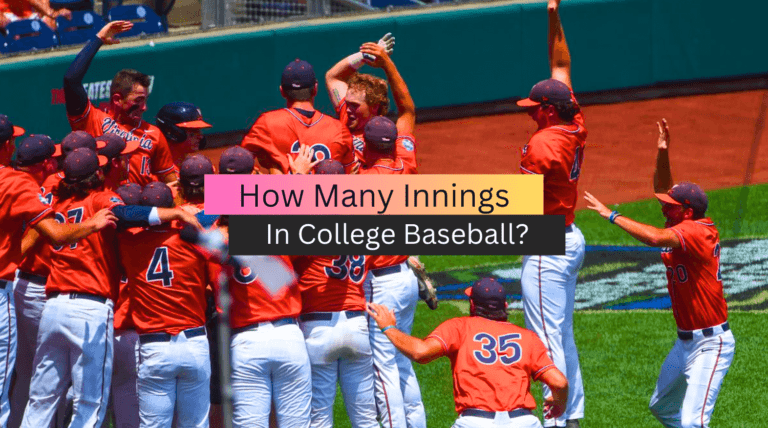What Does RHP Mean In Baseball?
Are you a baseball enthusiast or aspiring pitcher looking to master the intricacies of the game? If so, you’ve likely come across the term “RHP” in your quest for baseball knowledge. RHP, which stands for “Right-Handed Pitcher,” is a crucial position on the baseball field that plays a pivotal role in shaping the outcome of the game. From throwing blazing fastballs to spinning curveballs, RHPs possess unique skills and strategies that make them a formidable force on the mound.
What Does RHP Stand for?
RHP stands for “Right-Handed Pitcher.” In the context of baseball or softball, it refers to a player who throws the ball with their right hand and is typically positioned on the pitcher’s mound. RHPs are an important position in the game, responsible for delivering pitches to the batter with speed, accuracy, and strategy to try and get outs.
They are a crucial part of a team’s defense and play a significant role in the outcome of the game. RHPs are often specialized pitchers who may have different types of pitches in their repertoire, such as fastballs, curveballs, changeups, and sliders, to keep the opposing batters off balance.
How Do Right-handed Pitchers Stand Out?
Here are some essential points on how RHP stands out in player advantage:
Platoon advantage:
The platoon advantage is a key aspect that makes right-handed pitchers stand out in baseball. As an RHP (right-handed pitcher), you are typically assigned to pitch against right-handed batters to exploit the platoon’s advantage. The platoon advantage refers to the fact that pitchers generally perform better when facing batters of the opposite handedness.
When a right-handed pitcher faces a right-handed batter, the ball typically moves away from the batter, making it more challenging for them to make solid contact. This is because the pitcher’s fastball and breaking pitches break away from the batter’s swing, creating deception and making it harder for the batter to square up the ball. Additionally, right-handed pitchers often have a more effective slider or curveball against right-handed batters, as these pitches break towards the batter’s hands, resulting in weak contact or swings and miss.
Furthermore, right-handed pitchers are more likely to be drafted due to the higher number of right-handed batters in baseball. Since the majority of batters in the league are right-handed, right-handed pitchers are in demand to provide the platoon advantage against these batters.
Traditionality:
Traditionality can be a significant advantage for right-handed pitchers in baseball. From a young age, right-handed pitchers are taught and trained to throw from the right side, which is considered the standard or traditional way of pitching. This means they do not have to face the challenges that left-handed pitchers often encounter, such as adapting to a different throwing motion or dealing with a lack of resources and equipment designed specifically for left-handed players.
The baseball industry, including equipment manufacturers, coaches, and scouting systems, is predominantly designed to cater to right-handed players. Most baseball gloves, for example, are made for right-handed players, with the glove worn on the left hand and the throwing hand being the right hand. This makes it easier for right-handed pitchers to find suitable gear and equipment that fits their natural throwing motion.
Slider and sinker techniques:
Slider and sinker techniques are two highly effective pitching strategies that can make right-handed pitchers stand out on the baseball field. These techniques are especially effective when facing right-handed batters, as they can create confusion and deception, resulting in missed swings or weak ground balls.
The sinker, a type of fastball, is characterized by its downward trajectory and late movement. It appears to be heading straight towards the batter, only to dive sharply towards the ground at the last moment, causing the batter to miss the ball and potentially inducing a ground ball out. The sinker is particularly effective against right-handed batters, as it can jam them inside or induce weak contact to the opposite field.
On the other hand, the slider is a slower pitch that can be used to great effect against right-handed batters. It starts off with a straight path, lulling the batter into a false sense of security, before breaking sharply to the side just as it reaches the plate. This sudden movement can cause the batter to swing early or misjudge the pitch, resulting in a swing-and-miss or weak contact.
What makes these techniques even more effective for right-handed pitchers is the ability to combine them, keeping the batter off balance with a mix of sinkers and sliders. This can make it extremely difficult for right-handed batters to anticipate the pitch and make solid contact, giving the pitcher a significant advantage on the mound.
Ball’s spin strength and speed:
Ball’s spin strength and speed are crucial factors that make right-handed pitchers stand out in baseball. Righties have a natural advantage in generating spin on the ball due to their strong hands and fingers. The strength and speed of the ball’s spin can affect its movement, making it harder for batters to hit accurately.
Right-handed pitchers can control the ball’s spin rate, adjusting it to create different types of pitches such as fastballs, curveballs, and sliders. The natural ability, comfort, and ease of generating a fastball pitch allow righties to throw batters off with their pitch repertoire. The increased spin rate also adds deception to their pitches, making it more challenging for batters to anticipate the ball’s movement.
The combination of spin strength and speed gives right-handed pitchers an edge in developing effective pre-pitching strategies. They can use their natural abilities to manipulate the ball’s spin and speed to keep batters guessing and increase their chances of getting strikeouts or weak contact.
Are Left Handed Pitchers Rare?
Yes, left-handed pitchers, commonly referred to as “southpaws” in baseball, are relatively rare compared to right-handed pitchers. According to statistics, only about 10-15% of pitchers in professional baseball are left-handed, making them a minority in the sport.
One reason for the scarcity of left-handed pitchers is that the majority of the population is right-handed. In fact, studies estimate that about 90% of the world’s population is right-handed, which means that left-handed individuals are inherently less common. This, in turn, translates to fewer left-handed athletes in various sports, including baseball.
Another factor contributing to the rarity of left-handed pitchers is the advantage they have over right-handed hitters. Most baseball players are right-handed, which means they are used to facing right-handed pitchers. When a left-handed pitcher steps on the mound, it can throw off the timing and mechanics of right-handed batters, giving the left-handed pitcher a strategic advantage.
What size of the plate does a right-handed batter stand on?
A right-handed batter typically stands on the left side of home plate. The home plate is a 17-inch square with two corners removed, and the batter stands towards the rear of the plate, close to the catcher. The batter’s feet are usually positioned slightly apart, with the front foot closer to the pitcher’s mound and the back foot slightly behind, ready to pivot and generate power for the swing.
The exact position of the batter’s feet on the plate may vary depending on the batter’s stance, style, and preference. Some batters may stand closer to the inside edge of the plate, while others may stand closer to the outside edge. The positioning of the batter on the plate can affect their ability to reach pitches in different locations and influence their hitting strategy.
What do you call a right-handed pitcher?
In the world of baseball, pitchers play a crucial role in the game. They are the ones who stand on the mound and deliver fastballs, curveballs, sliders, and other pitches with precision and power. Among the different types of pitchers, right-handed pitchers, often referred to as “righties”, are the most common on baseball teams.
Righties are called so because they use their right hand to throw the ball. They make up the majority of pitchers in baseball due to the fact that most people are right-handed. They are known for their ability to throw hard and generate velocity on their pitches, making them formidable opponents on the mound.
Right-handed pitchers are highly valued in baseball due to their versatility. They can throw different types of pitches from different angles, making it challenging for batters to predict their next move. Righties are also known for their ability to dominate right-handed batters, as their pitches tend to break away from the batter’s swing, making it difficult to make solid contact.
In addition to their pitching skills, righties also play a critical role in fielding their position. As most batters are right-handed, right-handed pitchers have a natural advantage in fielding balls hit back to the mound, as they can easily glove the ball with their non-throwing hand and make accurate throws to first base.
Conclusion
In conclusion, RHP in baseball stands for “Right-Handed Pitcher.” It refers to a player who throws the baseball with their right hand from the pitcher’s mound to the batter. In baseball, pitchers are classified based on their throwing arm, either left-handed (LHP) or right-handed (RHP). Right-handed pitchers are commonly used in baseball games to throw pitches to batters from the right side of the pitcher’s mound. They play a critical role in the game, using their skill and strategy to try to strike out batters or induce ground balls or fly balls to help their team win the game.
FAQs
What is LHP and RHP in baseball?
LHP and RHP in baseball refer to “left-handed pitcher” and “right-handed pitcher,” respectively. LHPs are pitchers who throw with their left hand, while RHPs throw with their right hand. The distinction is important in baseball as it affects the way the ball breaks and the angles at which it approaches the batter, which can impact a batter’s ability to hit the ball.
What does LHP mean in baseball?
In baseball, “LHP” stands for “left-handed pitcher.” It refers to a pitcher who throws the baseball with their left hand, using their left arm to deliver pitches to the batter. Left-handed pitchers are often valued for their ability to create different angles and movements on their pitches, which can make them challenging for right-handed batters to face.
What do baseball acronyms mean?
Baseball acronyms are abbreviated terms commonly used in baseball to represent longer phrases or concepts. Examples include RBI (Runs Batted In), ERA (Earned Run Average), OPS (On-Base Plus Slugging), MLB (Major League Baseball), and OBP (On-Base Percentage). These acronyms are used to quickly and concisely refer to specific statistics, positions, or organizations within the sport of baseball.
What does TBH mean in baseball?
TBH in baseball stands for “To Be Honest.” It is not a specific baseball term or acronym used in the context of the sport itself. Instead, it is a common internet slang abbreviation used in informal conversations or social media to preface a candid or truthful statement.







